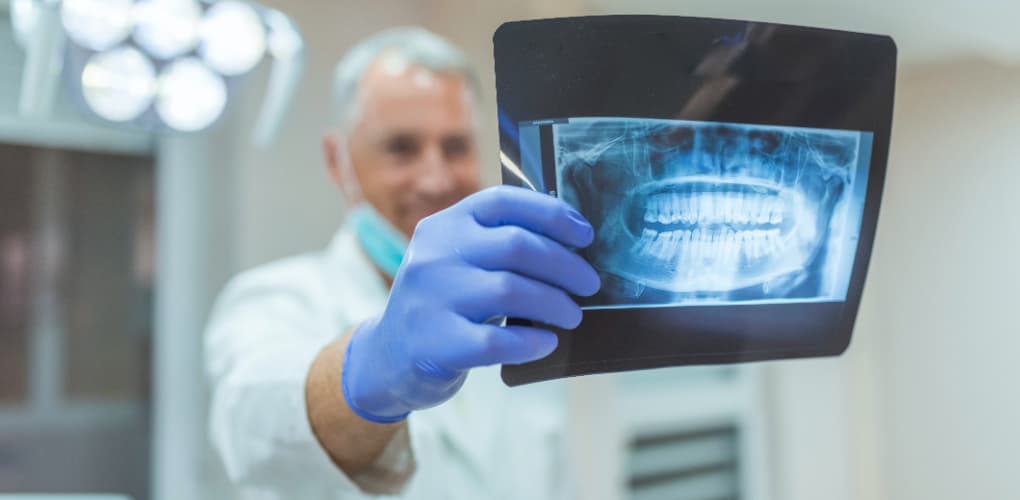Tips to Safely Practice Dental Radiology During COVID-19

Many aspects of providing dental care have become more challenging during COVID-19, and the practice of dental radiology is no exception. Like other members of the clinical staff, dental radiographers and technicians remain near the patients’ mouths for a significant duration of time, which heightens the risk of spreading SARS-CoV-2 if anyone in the room is infected. Thankfully, recommendations for infection control have improved over the past two years of the pandemic as experts researched the virus.
Here are the top strategies for limiting COVID-19 spread and improving safety while practicing dental radiology.
Assure the radiology technicians have appropriate personal protective equipment (PPE). The minimal equipment includes a disposable surgical mask, cap, gloves, long-sleeve gown and face shield or goggles. The staff should also understand and practice proper PPE donning and hand hygiene.
Use disposable plastic film barriers over high-touch surfaces. These plastic films should cover all surfaces that come in contact with the patients, doctors and technicians, including door handles, the operating chair, the X-ray machine tube head and buttons on the control panel. The films should be removed and disposed of immediately after the procedure.
Thoroughly disinfect the radiology room between patients. The World Health Organization (WHO) advises disinfecting high-touch surfaces like light switches, trays, sinks and floors after every patient and low-touch surfaces daily. Hypochlorite, ethanol and hydrogen peroxide of suitable strengths are three recommended disinfectant solutions.
Ventilate the radiology room between patients to reduce the potential of viral particles in the air. Opening windows is a great way to disperse the air safely, but many radiology rooms do not have windows (or if they do, they aren’t easily opened). HEPA filtration systems, portable air cleaners and purifiers can help reduce contaminants when ventilation with outdoor air is not possible. Learn more about air filtration best practices from the U.S. Environmental Protection Agency.
Have the patient use an oral rinse prior to any dental procedure. Rinses of 1% hydrogen peroxide or 0.2% povidone solution have been shown to reduce SARS-CoV-2 viral load.
Avoid using physical copies of radiographs, which can harbor virus particles and be a vehicle for cross-contamination. Digital radiographs eliminate the need for hard copies and, when consultations are needed, can make the transfer of images much easier. As always, assure the proper security of all patient information when stored and transferred electronically.
Only take dental radiographs when necessary and consider the best method of radiography to use. Taking into consideration the likelihood of the patient to have a strong gag reflex, the extent of the clinical problem and the age of the patient can help dentists make the safest choice for everyone. This flowchart from the American Academy of Oral and Maxillofacial Radiology is very helpful.
By following these recommendations, dental professionals can prioritize their patients’ dental health and limit the potential spread of any viral infection during radiology procedures.
For more information related to risk management and COVID-19, visit the MLMIC Dental blog, The Scope: Dental Edition, Dental Impressions and our Twitter and LinkedIn pages.



